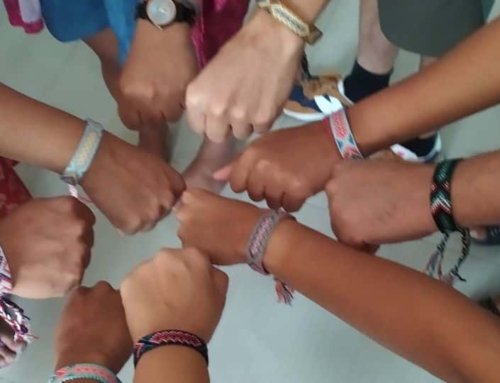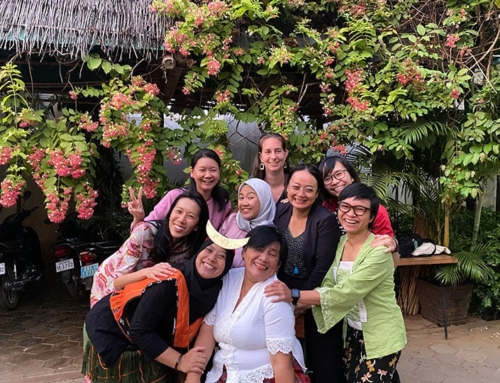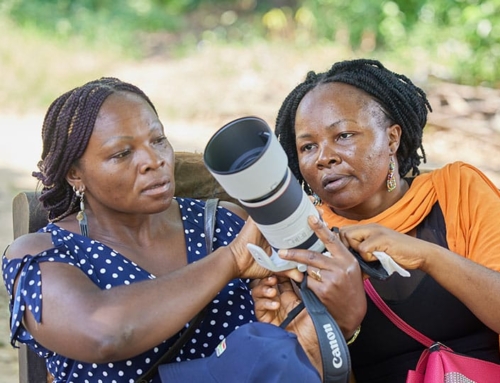Arizona Muse devotes much of her time – when she’s not modelling – to learning about and promoting the value of sustainable approaches to fashion. Arizona is an ambassador for our work at Synchronicity Earth, lending her voice to our recent Fabric of Life series. We decided to find out more about what makes her tick.
Arizona Muse started modelling as a teenager but her career didn’t initially take off. When she got pregnant with her first son Nikko at the age of 19, she took some time out to think things over. When Nikko was one and a half, she decided she was ready to throw her energy back into modelling. She moved to New York, rented an apartment for 6 months to do fashion week and focused on making it work. Since then, she hasn’t looked back. She has gone on to grace the covers of the fashion world’s biggest publications and open many of its most famous shows.
Growing awareness
When did you first start thinking about the environmental impact of fashion? Was there a catalyst?
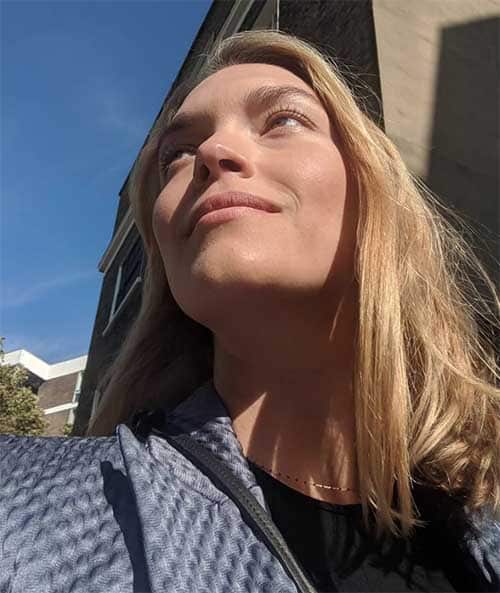
© Arizona Muse
Yes, the catalyst was Jessica Sweidan at Synchronicity Earth. I went to an event about five years ago and heard Jessica speak about the work they do. I was really moved by what she said about the environment. Of course I was aware that we have to look after our environment, as we all are to some extent. But it had never hit home quite so powerfully as it did that day.
So, you had this environmental ‘awakening’ and then you started to think more about how it relates to what you do and the fashion industry?
Yes, exactly. Up until that point, I’d been starting to feel that I wasn’t having very interesting conversations anymore. I was feeling a bit passionless and not sure what my purpose was. My career had gone well and I was incredibly lucky but there comes a time where you’re not really climbing anymore, you’re just carrying on the way you always have. After a few years of that, I felt that it was no longer enough, and that’s when that first seed was planted and I started thinking much more about fashion, sustainability and the environment.
Since then I have devoted pretty much all my spare time to learning more about it. I’ve become quite nerdy about environmental science! I spend a lot of my time reading and researching, watching documentaries and meeting the key people in fashion sustainability in London. I’ve learnt so much and met so many fascinating people.
The fashion industry’s dirty secret
From your own experience and from what you’ve learnt in the last 4 or 5 years, how would you sum up the negative impacts of fashion for our environment?
We’ve really ignored the fact that fashion is hugely toxic to the environment to start with and incredibly wasteful to finish. If you look at the lifecycle of a garment now, including the seeds from which the garment was grown, all the way through to the dump – or the ocean – in which it ends up, it has a huge but also very complex impact. It’s not just the individual t-shirt or dress that’s wasted. I don’t think of garments so much as what they are anymore, but more as what they’re made of. I’ve become very passionate about materials, that’s what I’ve focused on, because I’ve found that without healthy materials, there’s really no hope for a healthy fashion industry. So, in talking about impact, you need to start with the materials.
It’s a depressing picture, but are there any positives you’ve found to the fashion industry? At its best, what can fashion contribute?
At its best, fashion can be an incredible platform to influence the rest of the world. The messages in fashion travel extremely quickly to millions of people – that’s an extraordinary power that we need to harness for good, rather than just for superficial or entertainment purposes. Creative directors and others who work for brands have so much power in their hands, and that can be – it should be – a fantastic thing. Fashion is also an industry that impacts many other sectors: it crosses over with agriculture because of the materials used, it crosses over with mining because there’s a lot of metal used in fashion… to me, the potential for fashion to influence other industries is very exciting.
Change is coming
So you think the fashion industry is genuinely starting to change? When do you think that really started to happen?
Yes, I do think that. Just in the last year or two. I know people in the industry who’ve been here for 15 years saying let’s change, we have to do something, this is an emergency. Many of these same people, last year and perhaps the year before, finally feel like there is a lot of traction happening for sustainability in fashion right now – so I guess it was 2017 that was a really pivotal year.
What would you put this change down to?
Climate change! The science on climate change continues to come out, and governments are finally beginning to acknowledge – not all governments, as we know, but most governments – that we really do need to start changing the way we do things. I think that has had an effect on fashion, leading many in the industry to finally realise that it was time to actually do something. Then sustainability became a buzzword and now it’s cool to talk about it, even if people don’t always really understand what the word means, they’re using it all the time. Sustainability is cool now in a way that it just wasn’t five years ago.
Can fashion find a new voice?
Do you think that fashion models could potentially have more of a voice and a more positive influence?
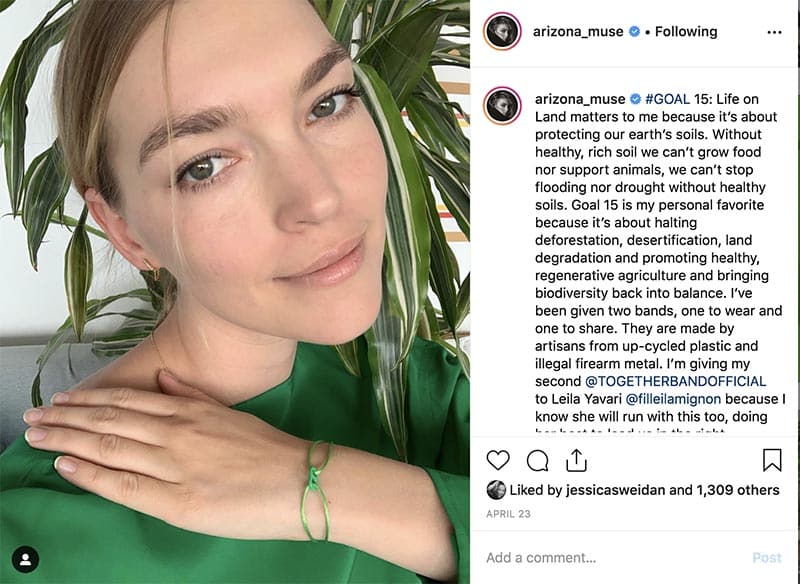
© Arizona Muse
Models generally have much more of a voice than they did 20 or even 10 years ago. I think it has a lot to do with Instagram and with people finally getting to know who models are. In a magazine you can’t get to know who a model is: they are wearing someone else’s clothes, someone else was the art director, someone else took the pictures. It’s a creative job, but it’s generally other people’s creativity, not the model’s. I do think Instagram has allowed models to have more of a voice.
Yet at the same time, Instagram is sometimes cited as a contributing factor to the phenomenon of fast, unsustainable fashion, with some people not wanting to be seen wearing the same outfit more than once for their Instagram feed.
That’s true, it does also have that kind of negative impact, but even so, it has definitely helped to give models more of a voice. As a model, before Instagram, you’d have an interview once in a while, but it really wasn’t your voice – the interviewer would write down whatever they chose to say, it was a matter of luck whether you really shone through. They often made you seem like something you weren’t, or what they wrote simply didn’t reflect your interests in any way.
I personally have done a lot of interviews in which I’ve specifically asked to talk about sustainability in fashion. The interviewer says, “yeah, sure, tell me a bit”, then “OK, and how many times do you work out each week?” It has a tendency to quickly circle back to something physical, but as I said, I think that’s starting to change.
Reaching new audiences
Who do you consider to be the most important audience you can reach and have an impact on?

© Arizona Muse
I think women and particularly mothers are the most important audience I can speak to. I’m trying to reach people who are not necessarily in fashion because until now I’ve had a very fashion-centred following, which is great, but I’d really like to branch out. Fashion can be a bit of an echo chamber. I recently did a feature with Town & Country magazine, which is really exciting and I’m really happy with the content. I approached them and asked them if they wanted to do a shoot with me about agriculture – because I’m interested in biodynamic farming – so I’m really pleased with that because it is a totally different audience. These are people who might have seem me before in a magazine or on a billboard, but who don’t really notice me because I’m a model. They’re not ‘fashion’ people so they don’t follow models. It’ll be great to reach people who might previously have had absolutely no interest in what I had to say.
Honestly, I’m kind of desperate to be known for something else, other than being a model! I love it when I’m chosen for modelling campaigns not because I’m a model but because of my interest in sustainability, and that has started to happen, which is amazing! I speak a lot now and am often asked to take part in or moderate panel discussions.
Is it frustrating that many people see you first and foremost as a model, before anything else?
Well, it has its pros and its cons. One pro is that I can say almost anything and it sounds impressive, because for some reason people still think that models are never going to have much to say. There is a kind of stigma around models, so in a way I can walk into a room and if I speak well and have confidence in what I say, then people are impressed!
Being a model opens many doors for me that I wouldn’t have otherwise, so I’m really grateful for that. But I do have the feeling that I’ve been put in a box that is not my box, so I really want to break out of that.
Buying clothes better
Coming back to the issue of sustainability in fashion, clearly people aren’t going to stop buying clothes any time soon. What advice would you give to people who want to buy clothes better?
People need to dress, we all need to wear clothes and we all want our clothes to reflect our personal style. That’s a wonderful thing, but we just need to focus on the messages we’re sending through our purchases, the messages we’re giving with the brands we wear.
For buying clothes better, I would say the first thing to do is simply to choose more carefully – make sure you really like it. We always hear “Buy less!”, but the question is how do you buy less? By thinking really carefully each time you buy something: What am I going to use this for? Am I going to be able to use it more than a few times? Is it going to be a piece that is easy to wear with other things? Do I have space for it? Think about what you need, plan it out.
Another thing is to pay close attention to the materials that the clothes you buy are made from. For the things that you do buy, just like food, read the labels. I never buy food without reading the label: I always want to know what’s in my food, and that’s something I think should be common standard practice, not just when buying food, but also clothing. You need to know what’s in it.
Just because something is made from a natural fibre doesn’t mean that it has a positive impact on the environment. Cotton has a very negative impact on the environment unless it’s organic. Organic cotton is slightly more expensive by the bushel, when it’s the raw material, but the difference is minimal. However, one issue is that it’s expensive and time-consuming for a farmer to switch from conventional to organic cotton, and they need a lot of support to do it. Without support, for three years, farmers incur the expenses of being an organic farmer without being able to sell their crop as organic. But there’s a movement now – which I think started in China – called the Transition cotton movement. The idea is that you can describe your cotton as transition cotton for that three-year period and sell it at the median price between organic and conventional. It’s a great movement, because it gives the consumer the opportunity to do the right thing – it’s not organic but it’s getting there: it’s a bit less expensive and it’s helping farmers to change.
As a brand you can make that decision and find a supplier who can source transition cotton for you. You can do a lot as a consumer, your purchasing power does have a huge amount of impact, but as a brand you have more impact, because the decisions you make will have greater impact. So there’s really no excuse for a brand or mill to say that they still spin or weave with conventional cotton or still sell garments put together with conventional cotton.
So, coming back to your original question, you basically need to buy less and understand how to buy less, and pay more attention to the materials you’re buying.
But is there a danger that buying sustainable fashion could be seen by some as similar to buying organic food – a luxury which, if you happen to have the time and money, is great, but is not accessible to most people?
No, I really don’t think so. I watch plenty of people I know shop on very small budgets and they manage. Buying second-hand is a very sustainable choice, because then the type of material doesn’t matter so much. For instance, if I buy something synthetic, it’s always second-hand because I don’t want to support the production of new products out of synthetic materials. If I want a new pair of acetate plastic earrings that are really cool and chunky and fashiony, I’ll buy those second-hand. I shop on Ebay a lot. It’s an amazing resource to find extraordinary things, you end up spending a lot less money: furniture, for instance, is often far better quality if it was made a while ago. You don’t need to buy new… I think that being sustainable can definitely be done on a small budget.
What about in terms of time? Shopping well is not easy, it takes time and a lot of research, so perhaps that time is also a luxury that many people won’t have?
I think on the tech side of sustainability they’re making important steps towards that. It’s becoming much easier to filter what you’re buying, using apps for example. CoGo is a new app that helps you filter your decisions and find sustainable vendors by location. If you’re in London, for example, you can search nearby for anyone doing things sustainability, helping you to make better food and fashion choices. So, things like that are really helpful to encourage people to continue developing more sustainable products. People do need shortcuts and help making decisions, because if you’re not well-versed in sustainability, it can be very hard to tell who is really sustainable and who is not. We also need to rank them, because some are doing better than others. They’re not all the same.
In ten years I’m really hopeful that things will be different, that it will be much more obvious how to make better choices.
Nature and the environment
When do you feel most connected to nature? What connects you to nature?
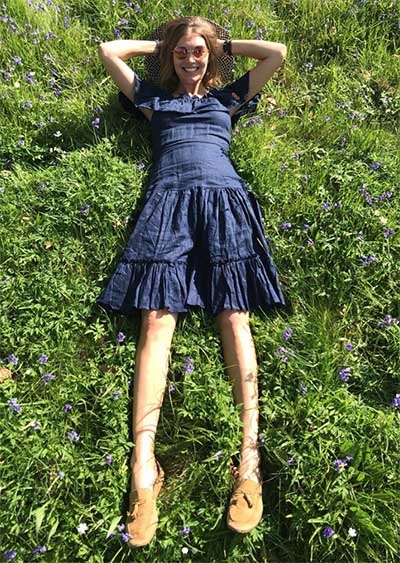
© Arizona Muse
I have felt so starved for nature in the last few years! I always knew I’d spend my twenties in the city and that was really exciting. For 7 or 8 years, I didn’t feel starved for nature at all and I was really happy in my city life. In my early twenties, I used to feel that nature was a bit dirty and messy, I might get cold, I didn’t particularly want to get closer to it and I preferred the comforts of the city, where you have everything you need right there at your fingertips.
But more recently, and particularly as I’m going through this process of learning more about sustainability and the environment, I’ve realised that there is a real nature deficit in my life. I’ve just been noticing this feeling recently of not getting my ‘fix’ of nature, I’m not quenching that need. Of course it’s nice to go in a park but it’s not the same thing, you don’t feel that incredible feeling that you do when you are somewhere really wild and untamed. Great Britain is a very farmed and very built up island, so even in the countryside it’s not always easy to get that feeling of being truly immersed in nature.
On the flip side of that, and this might sound strange, I find that if I spend a little bit of time, even just a minute, finding a piece of moss or tree bark and really looking at it closely, at its colours and shapes, letting it soak into my eyes – I feel that it starts to quench that need. Just a little piece of moss or tree bark can do something to satisfy my need for nature. I guess some people would call that ‘mindfulness’, which is not something I practise. The point is that you can find nature anywhere and I think that looking in a very detailed, attentive way can help.
What are you planning to do next in the sustainable fashion space?
Well, I want to continue to do everything I can to create more awareness of sustainability in fashion and keep learning as much as I can. But I’d really like to do more than just create awareness. The feedback from people I speak to in the fashion industry is that nobody really understands what I’m doing with all my work on sustainability. My agents say I should start a foundation or a charity so people can put a label on what I’m doing, but to me that’s not the right answer. A lot of people who have a bit of celebrity start charities, but they can be entirely unrelated to what they actually do and know about, and I think this disconnect can do more harm than good.
I went through the process last year of starting a brand, but in the end I didn’t press go on it because I didn’t think the industry really needed another brand. I think the retail model in its current form sets most brands up to fail and it’s also not fair to the consumer. Why is the consumer paying 500% of the cost of making the garment because it has a name associated with it? Even so, the process gave me a deeper insight into the brand perspective and a designer’s point of view. I know what it’s like to order fabric and to put a supply chain together and everything that can potentially go wrong with that. As a model, this is not something you ever really come into contact with, so it was a useful learning experience
I’m still very interested in business, but ultimately I would like to start a business that actually and actively fosters change, and I do have some plans in that direction (so watch this space!)
Why are you an ambassador for Synchronicity Earth – what do you like about what they do?
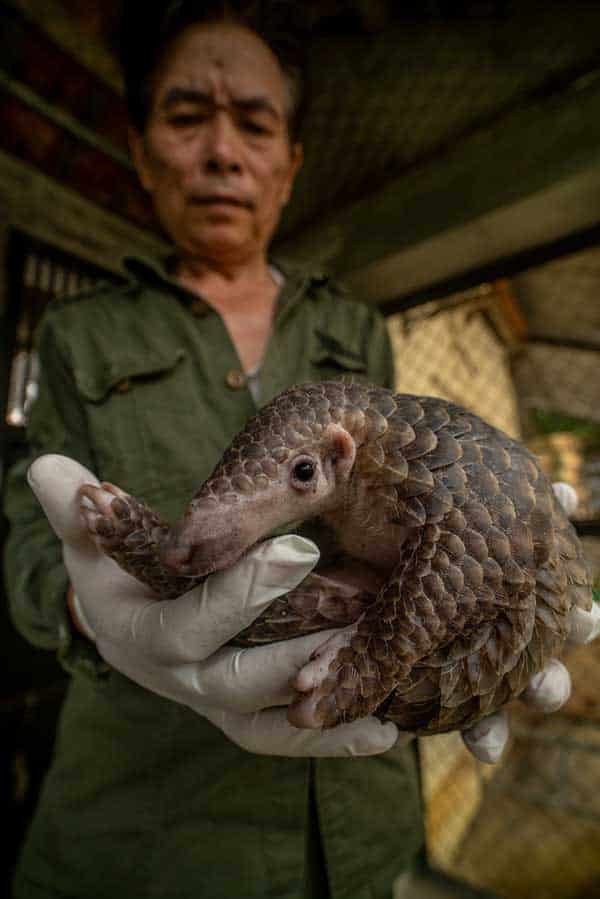
Young pangolin at Save Vietnam’s Wildlife rehabilitation centre. Photo by Chris Scarffe
The best thing about Synchronicity Earth for me is the level of research you do into the people and the issues you support, finding the smaller, less well-known conservation issues and directing more attention and funding to the organisations doing the great work. You’ve never supported the elephants of this world. Of course, they are beautiful and majestic and we love them, but a lot of people support elephants because they’ve seen them before. You support the freshwater species and habitats that nobody’s heard of, the amphibians that don’t get talked about or the places where species are disappearing that don’t get the headlines. Those are the ones for me that are really important. I want to know that my support is going to the species and wild places that are overlooked.
What gives you hope for the future and what can everyone do to help steer us down a more sustainable path?
The work I’m doing now on sustainability is so fascinating to me and fills me with so much energy and enthusiasm because I really see the potential for change. Maybe we’re not going to fix the problem before my children are adults, but while the temperature continues to rise and natural habitats and species continue to disappear, every minute really counts.
I think a great pledge for every human to make is that right now, you can look at what have you been doing for sustainability until today and make a pledge to double that, starting tomorrow. If everyone in London did that it would be really powerful, but imagine if everyone in the world did that? For me, I think I’m already doing quite a lot, but I could still double it. I could still afford to double what I do, in terms of time, energy and money, and I’m sure most people could do the same.
I also think that those people who have the financial capacity to change things should remember that money alone is not enough. If you have money to change things, great, please donate, but also spend your time and energy doing something and learning: that is invaluable. It’s easy, when you’ve made a financial contribution to think you’ve done your bit, but on its own, it’s not enough.
Thank you!


